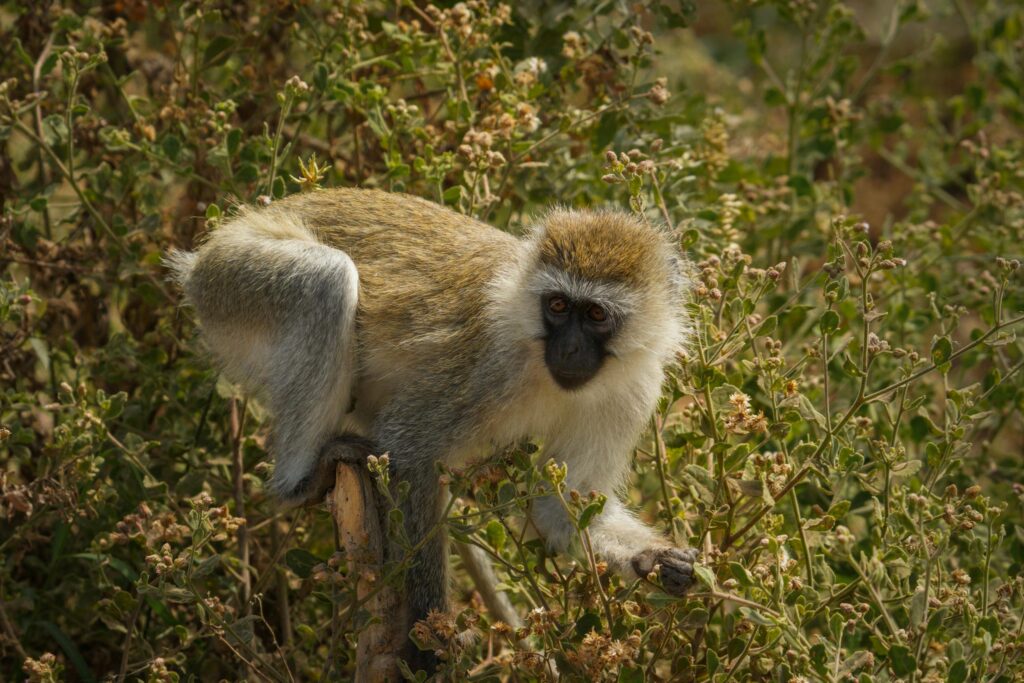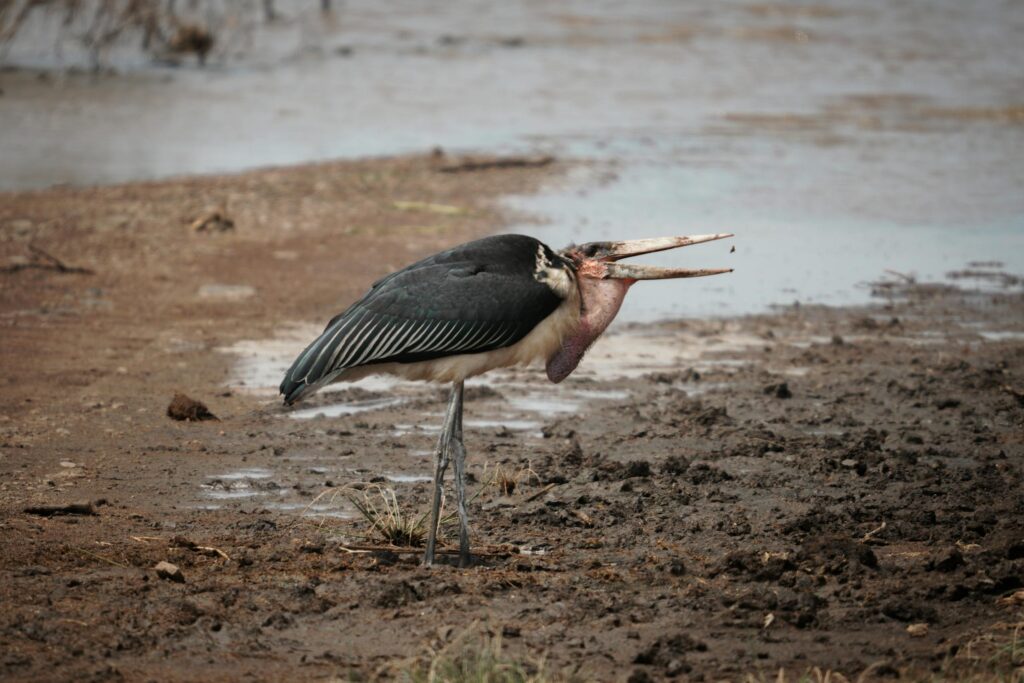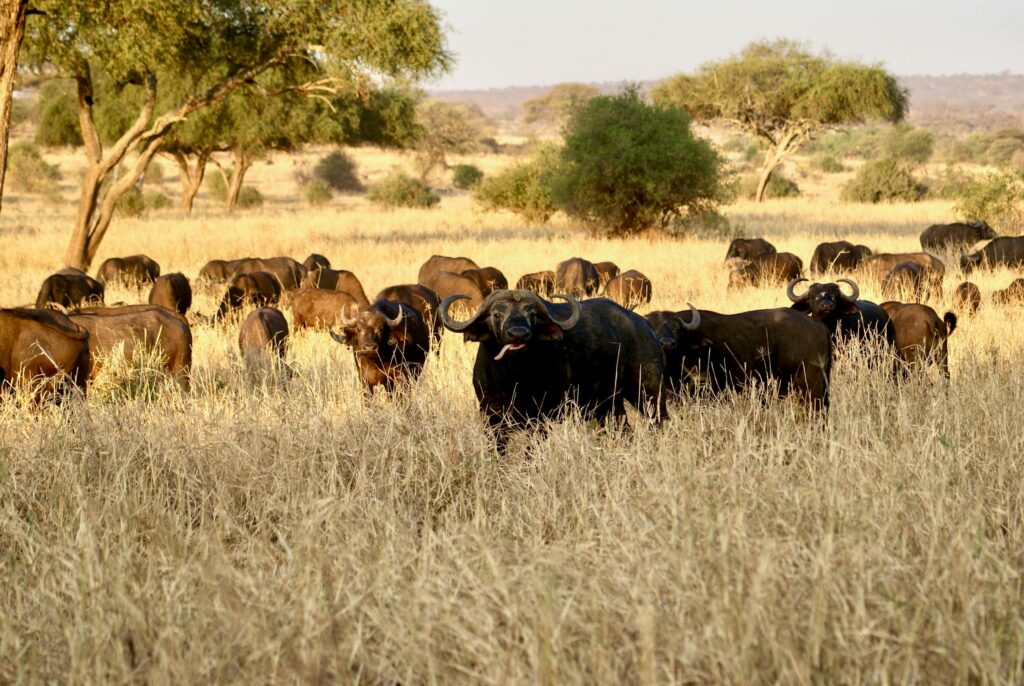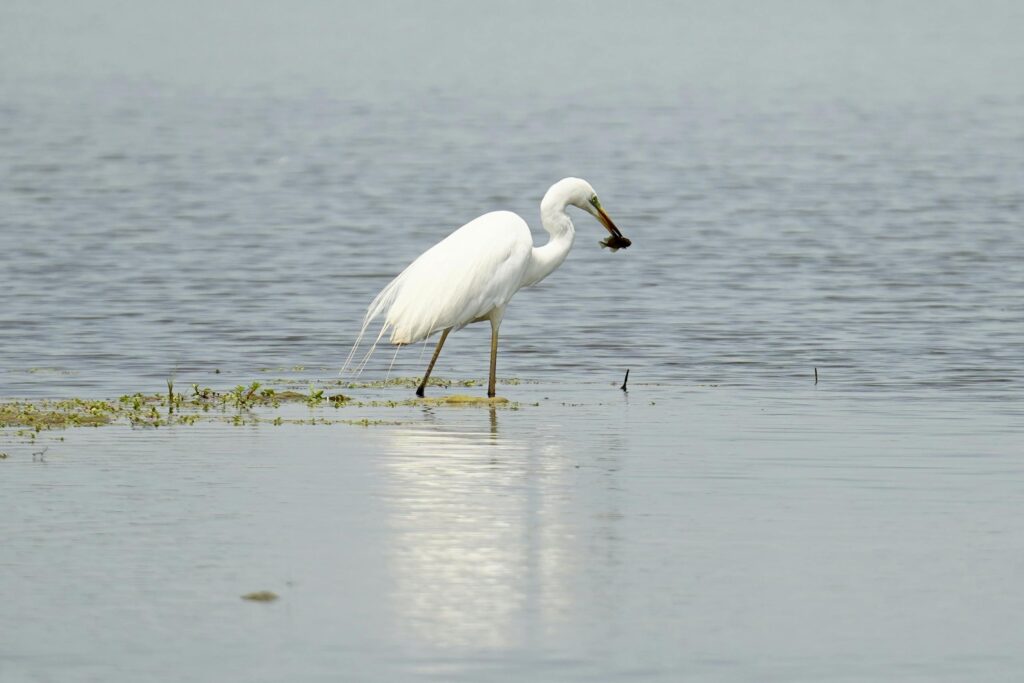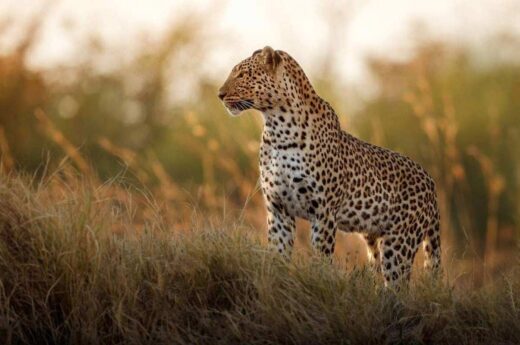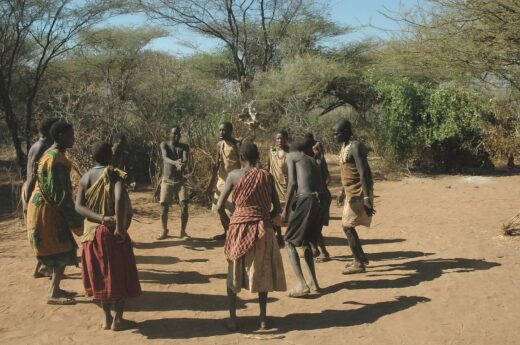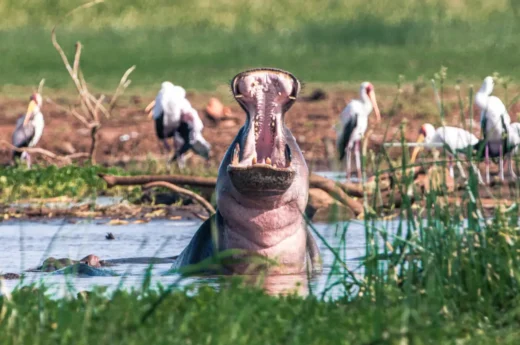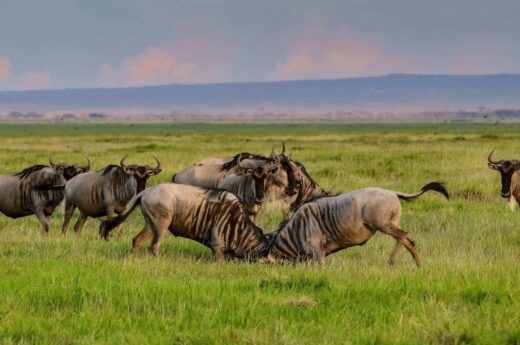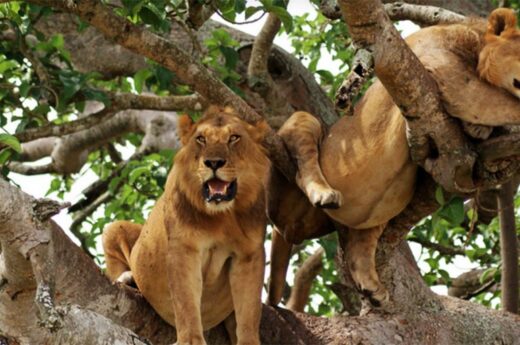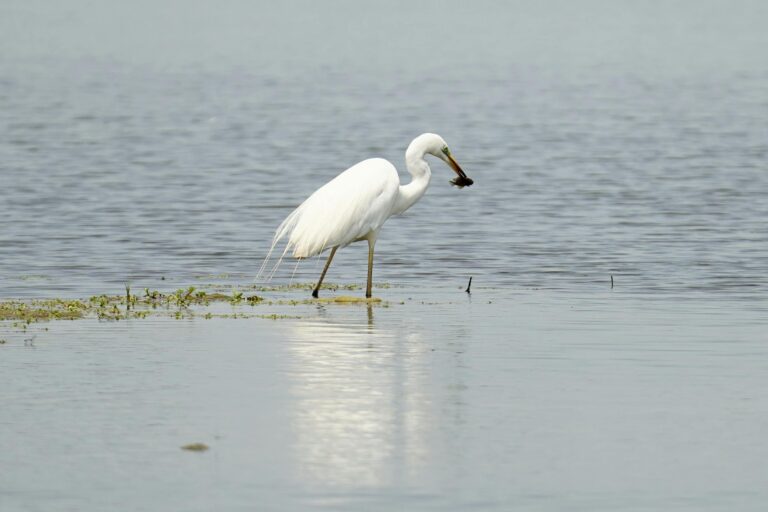
Lake Manyara National Park
With our specialized tours, set out to see the famous tree-climbing lions of Lake Manyara National Park.
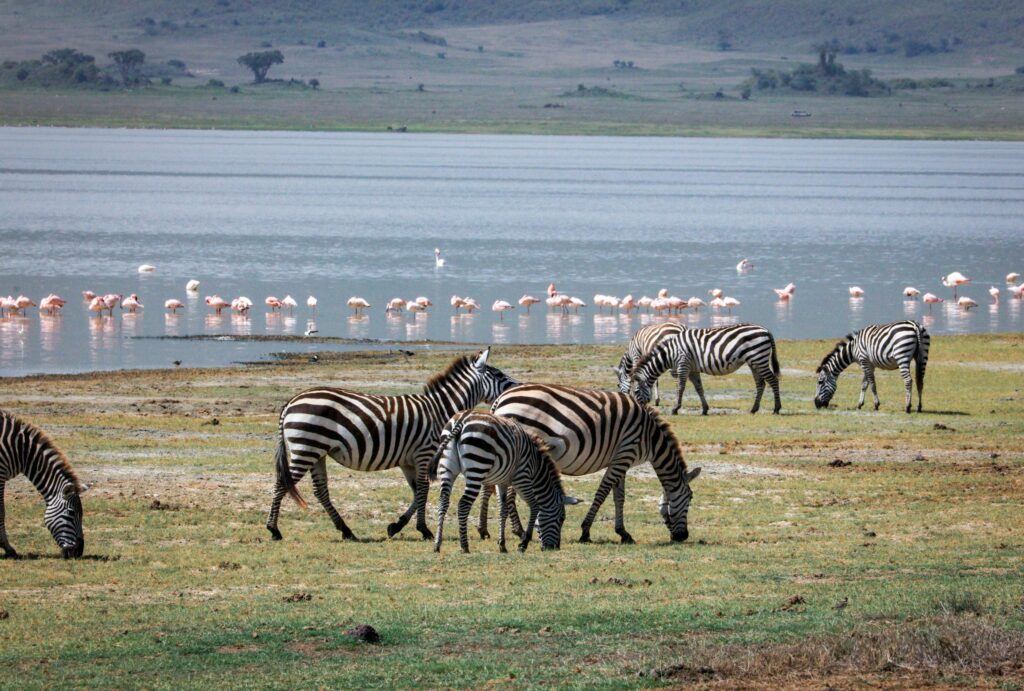
About Lake Manyara
Founded in 1960 within Tanzania’s Great Rift Valley, Lake Manyara National Park covers 330 sq. km. Its name originates from the Maasai term ‘enyara,’ referring to its milky, alkaline water. The park showcases varied environments, from an alkaline lake to grasslands and thick forests.
This park is celebrated for its diverse animal life, with large groups of elephants, giraffes, zebras, and wildebeest. Though rhinos aren’t present, it’s unique for its tree-climbing lions and spotted hyenas. Birdwatchers can spot more than 400 species, and the vegetation includes ancient fig trees and huge baobabs.
“A 2.5-hour drive or direct flights to its airstrip will get you to Lake Manyara National Park, 126 km from Arusha. The park’s beautiful landscapes and rich biodiversity make it a top choice for nature and wildlife fans.”
Highlights
Walking safaris
Develop a new understanding and respect for nature by hiking with an armed guide.
Maji Moto Kubwa hot spring
Warm water seeps up, resulting in a lush, swamp-like area that provides excellent nesting conditions for birds.
Bird-watching
Given the average of over one new species per square kilometer, bird lovers will have numerous opportunities to add to their sightings.
Elephants
“Excellent opportunities exist for spotting lions, cheetahs, leopards, and spotted hyenas, along with the chance to see the critically endangered African wild dogs.”
Tree-climbing lions
The area is home to Fringe-eared Oryx, the seldom-seen Coke’s hartebeests, long-necked gerenuk, dik-dik, Grant’s gazelles, and various other animals.
Scenery
With its lovely lake, rich birdlife, and encompassing views, the area exudes the finest African scenery.
Highlights
Lake Manyara National Park features a breathtaking mix of natural landscapes. Verdant forests meet the shimmering alkaline lake, all framed by the impressive Great Rift Valley escarpment. Expansive grasslands and acacia woodlands offer perfect environments for wildlife viewing.
The park’s diverse landscape, featuring ancient mahogany trees, fig trees, and towering baobabs, offers both grandeur and shade. Visitors can immerse themselves in nature’s beauty, with views of serene lakes, dense forests, and vast plains.
January & February – “Dry conditions often occur between the rains, but predicting the exact time is challenging.”
March – May –‘Long Rains’ – Although it rains daily during the wettest months, it is unusual for it to last the whole day. It is mostly cloudy.
June – October – The ‘Dry Season’ sees a surge in tourists, who come for Lake Manyara National Park safaris and its abundant wildlife. The long dry spell, lasting from June to October, is also the park’s peak season, attracting a high volume of visitors.
November – December – Expect an unreliable rainy season, the ‘Short rains,’ lasting about four weeks, characterized by short daily downpours.
Activities
Discover a range of Tarangire activities, such as thrilling safaris and cultural interactions, for a deep dive into the park’s rich wildlife and natural beauty.
Game Drives
Venturing out during the cooler, wildlife-active hours, you’ll explore in a tailored safari vehicle with a knowledgeable guide, seeking Africa’s renowned big game. All-day excursions are also an option.
Walking safaris
Visitors are allowed to walk within the park, under the supervision of an armed guide.
Night Game Drives
Embark on a thrilling post-sunset game drive to find nocturnal animals like civets and porcupines, and perhaps even predators.
Maasai Cultural Experiences
Visit a traditional Maasai village to learn more about their ancient and fascinating culture.
Canoeing
Experience a peaceful drift, observing shoreline wildlife, as your guide helps you identify the diverse water birds.
Bird Watching
With over 400 recorded species, a large portion being water birds, the area is a birdwatcher’s delight. Migratory species visit between November and April.

